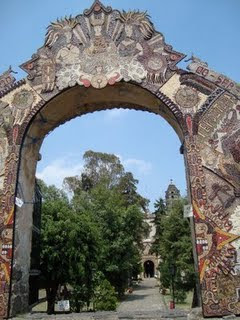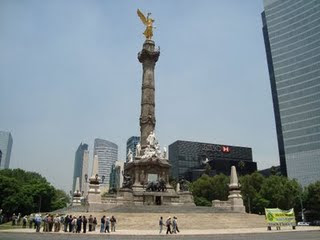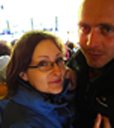



Around Mexico City: Teotihuacan
Well our last ruins visit in Mexico prior to fly back to England! Teotihuacan and its pyramids! Ones of the largest in the pre-Columbian Americas...as a city also when Teotihucan was at its zenith during the first half of the 1st Millenium CE. Around 100,000 people was living here, probably under various ethnic groups. The site was made UNESCO World Heritage Site in 1987.
Teotihucan was so the last archeological site we visited and we have not been fully enthousiastic...the pyramids were absolutely massive but the surroundings were too neat, all the paths were on asphalt like "the Avenue of the Dead"...we did not find real charm as other sites in Mexico or some others countries.
- The two main pyramids with on the right, the Pyramid of the Sun and on the left, the Pyramid of the Moon,
- The Pyramid of the Moon, the smallest. We did not like the asphalt all around the monuments. Don't think that during the Aztec time, asphalt was covering their roads!!!
- The Pyramid of the Sun, the second largest pyramid after the Pyramid of Cholula (see older post for Cholula),
- Lee went at the top of the Pyramid of the Sun. Nicely, I stayed at the bottom to take the picture. To tell the truth, this pyramid was too high to climb and I don't like height!!!
Well our last ruins visit in Mexico prior to fly back to England! Teotihuacan and its pyramids! Ones of the largest in the pre-Columbian Americas...as a city also when Teotihucan was at its zenith during the first half of the 1st Millenium CE. Around 100,000 people was living here, probably under various ethnic groups. The site was made UNESCO World Heritage Site in 1987.
Teotihucan was so the last archeological site we visited and we have not been fully enthousiastic...the pyramids were absolutely massive but the surroundings were too neat, all the paths were on asphalt like "the Avenue of the Dead"...we did not find real charm as other sites in Mexico or some others countries.
- The two main pyramids with on the right, the Pyramid of the Sun and on the left, the Pyramid of the Moon,
- The Pyramid of the Moon, the smallest. We did not like the asphalt all around the monuments. Don't think that during the Aztec time, asphalt was covering their roads!!!
- The Pyramid of the Sun, the second largest pyramid after the Pyramid of Cholula (see older post for Cholula),
- Lee went at the top of the Pyramid of the Sun. Nicely, I stayed at the bottom to take the picture. To tell the truth, this pyramid was too high to climb and I don't like height!!!





























